
The emblem of the Italian Republic was formally adopted by the newly formed Italian Republic on 5 May 1948. Although often referred to as a coat of arms, it is an emblem as it was not designed to conform to traditional heraldic rules. The emblem is used extensively by the Italian government.

Perrero is a comune (municipality) in the Metropolitan City of Turin in the Italian region Piedmont, located about 40 kilometres (25 mi) southwest of Turin.

Garbagna Novarese is a comune (municipality) in the Province of Novara in the Italian region Piedmont, located about 80 kilometres (50 mi) northeast of Turin and about 7 kilometres (4 mi) southeast of Novara. Notable the Palazzo Caroelli.

Ubaldo Soddu was an Italian general and politician who held the position of Deputy Chief of Staff of the Army and Undersecretary of State for War during the initial phases of World War II. On 13 June 1940, immediately after the outbreak of hostilities with France and the United Kingdom, he assumed the position of deputy chief of the General Staff. Promoted to army general, he replaced general Sebastiano Visconti Prasca as commander of the Albanian Higher Troop Command during the Greco-Italian War on 8 November 1940. Because of the defeat Italian troops suffered between 22 and 23 November 1940, he was replaced after four weeks in command by the Italian Royal Army's chief of staff, General Ugo Cavallero.

The Gazzetta Ufficiale della Repubblica Italiana is the official journal of record of the Italian government. It is published by the Istituto Poligrafico e Zecca dello Stato in Rome.
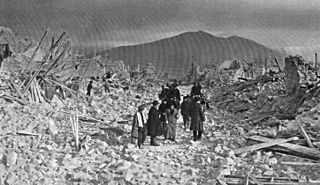
The 1915 Avezzano earthquake or 1915 Fucino earthquake occurred on 13 January in central Italy at . The shock had a moment magnitude of 6.7 and a maximum Mercalli intensity of XI (Extreme). The epicenter was located in the city of Avezzano in the Province of L'Aquila. Around 30,000 direct fatalities and $60 million in damage resulted from the earthquake.
The Medal of Military Valor is an Italian medal, originally established as a Sardinian award. It is awarded to military personnel, units above the level of company, and civilians for exceptional valor in the face of the enemy.

The Italian honours system is a means to reward achievements or service to the Italian Republic, formerly the Kingdom of Italy, including the Italian Social Republic.

The Capistrello massacre was a mass killing carried out in Capistrello, a small town in Abruzzo, Italy, on 4 June 1944 by Nazi and Fascist occupation troops during World War II. A first tragical episode occurred a few months earlier on 20 March, when a local youth was barbarically tortured and then shot. The following roundup made by Nazis and Fascists on the slopes of Mount Salviano led to the capture and torture of 33 shepherds and breeders. The shooting occurred near Capistrello railway station.
The fusion of Italian municipalities is the physical-territorial union between two or more contiguous comuni.
The Fidenza–Fornovo railway is an Italian railway line connecting Fidenza and Fornovo di Taro in the Italian region of Emilia-Romagna. It is managed by Rete Ferroviaria Italiana.
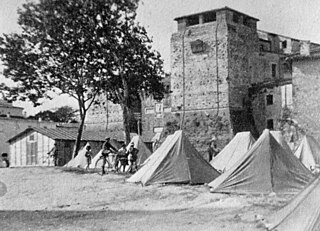
In 1916, two earthquakes of magnitude 5.82 occurred near the border between the regions of Romagna and the Marche in the Kingdom of Italy: at 13:50 CEST on 17 May, and at 09:06 CEST on 16 August.

The Commemorative Medal of the War Period 1940–43 is a decoration awarded by the Italian Republic to personnel who served in the Italian Armed Forces or certain civilian entities of the Government of Italy during Fascist Italy's participation in World War II on the side of the Axis powers between 1940 and 1943. It originated in 1941 as Fascist Italy's Badge of the 1940–1943 War Period, which the Italian Republic replaced with an identical badge of the same name in 1948. In turn, the Commemorative Medal of the War Period 1940–43 replaced the Badge of the 1940–1943 War Period in 1959.

The Commemorative Medal of the Spanish Campaign was a decoration awarded by the Kingdom of Italy during its period of Fascist rule under Prime Minister Benito Mussolini to personnel who took part in the Italian military intervention in Spain during the Spanish Civil War of 1936–1939.
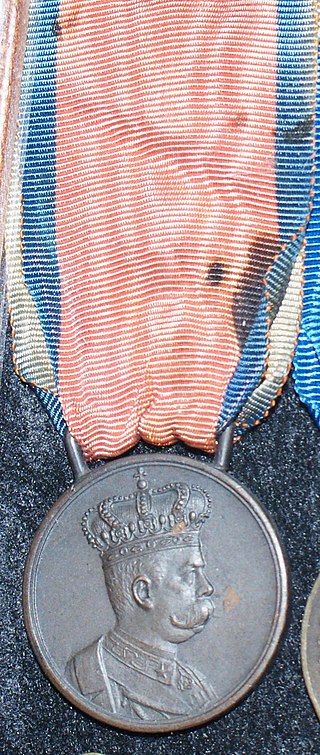
The Commemorative Medal of the African Campaigns was a decoration established in 1894 by the Kingdom of Italy for personnel who took part in Italian military operations in Africa between 1887 and 1896 as the Italian Empire began its expansion during the Scramble for Africa. As the Italian Empire expanded in East Africa, the medal's applicability was extended in 1906 and 1923 to include additional service in the region.
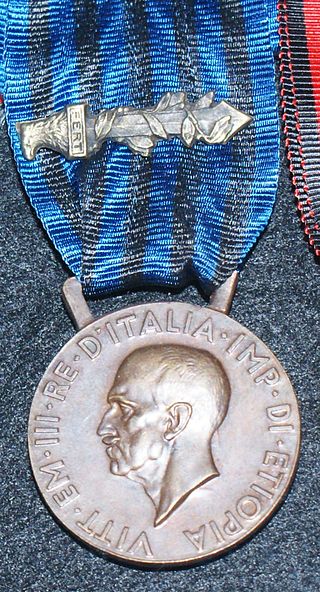
The Commemorative Medal for Military Operations in East Africa was a decoration established in 1936 by the Kingdom of Italy for personnel who took part in Italian military operations in East Africa in 1935 and 1936, corresponding to major military operations during the Second Italo-Ethiopian War. The Italian Republic abolished the medal in 2010.
The Badge of Honor for the "Volunteers of Freedom" Patriots is an award established by the Kingdom of Italy to recognize those who participated in the armed struggle of the Italian resistance movement or Italian Co-belligerent Forces against Axis forces in Italy during World War II or who refused to collaborate with Axis forces after being taken prisoner by Nazi Germany.
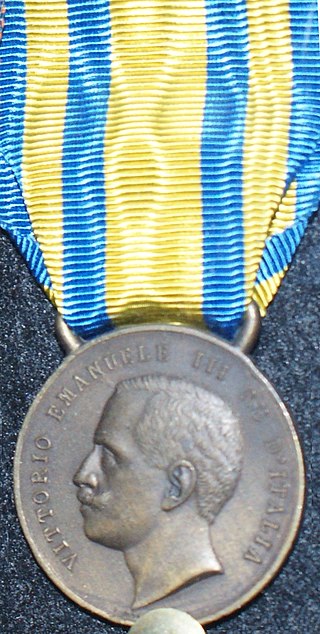
The Commemorative Medal of the Campaign in China was a decoration granted by the Kingdom of Italy to personnel who served in 1900–1901 in the military campaign of the Eight-Nation Alliance, which intervened in the Boxer Rebellion in China to relieve the siege of the International Legations in Peking, and its immediate aftermath. A "China" variant of the medal later was created to recognize service on occupation duty in China between 1902 and 1908. Both variants of the medal were abolished in 2011 after the Italian Republic deemed them obsolete.
The Cross for Length of Military Service is a military medal created by the Kingdom of Italy which then passed to the Italian Republic. Created in 1900 and updated or reformed in 1953, 1966, 1972, and 2010, it is a seniority award which recognizes lengthy honorable service in the Italian armed forces.
The Commemorative Medal of the Decennial Air Cruise was a decoration granted by the Kingdom of Italy to personnel who participated in or supported the Decennial Air Cruise in 1933. It was abolished in 2010 after the Italian Republic deemed it obsolete.












